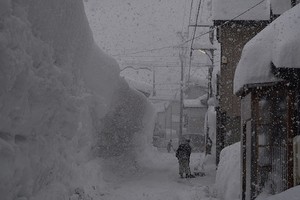THE ASAHI SHIMBUN
June 21, 2022 at 17:51 JST
Seismic experts warned that earthquakes are likely to plague Ishikawa Prefecture for months to come after an emergency meeting of a government committee convened to assess two temblors that occurred in rapid succession in the region facing the Sea of Japan.

“Seismic activity will continue for at least a few more months,” committee head Naoshi Hirata told the June 20 meeting held after a magnitude-5.0 aftershock hit within 24 hours of a temblor that registered 5.4 the day before.
The meeting was called to discuss the probable outlook for a continuation of the seismic activity, as well as its causes. Earthquakes have rattled the prefecture’s Noto Peninsula since late 2020.
Six residents were injured in the June 19 quake, although no major damage was reported.
Hirata urged the public to “make preparations” and remain alert for a similar strong jolt in the days or weeks to come.
There has been intense earthquake activity in the region since around December 2020 and sharp uplifts of land have been confirmed.
Takuya Nishimura, an associate professor at Kyoto University's Disaster Prevention Research Institute, speculated that water rising from a subducting oceanic plate deep under the Japanese archipelago is causing both the land upheavals and the earthquakes.
Referring to temblors that occurred from December 2020 to 2021, Nishimura said rising water put pressure on the bedrock, which resulted in the quakes.
Although the pace of land uplift has slowed in recent months, Nishimura said water had likely soaked through faults and other cracks in the bedrock, reducing the frictional forces that support the bedrock and causing the earthquakes.
“Even if the introduction of water into the ground stops, it is difficult to anticipate what will happen next. So there is a good chance that an even bigger quake will occur in the area,” he added.
(This article was written by Ryo Sasaki and Takahiro Takenouchi.)




















A peek through the music industry’s curtain at the producers who harnessed social media to help their idols go global.
A series based on diplomatic documents declassified by Japan’s Foreign Ministry
Here is a collection of first-hand accounts by “hibakusha” atomic bomb survivors.
Cooking experts, chefs and others involved in the field of food introduce their special recipes intertwined with their paths in life.
A series about Japanese-Americans and their memories of World War II